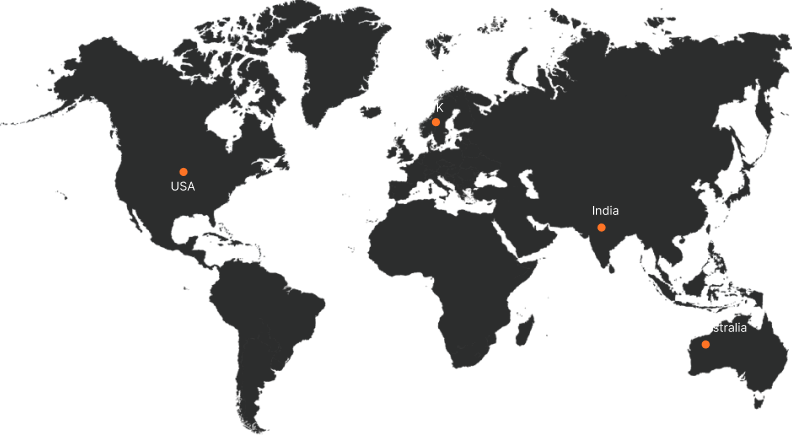How To Make Colour Prediction Website

Developing a colour prediction website is an ideal project for anyone interested in web development, machine learning, or interactive design. Such websites allow users to predict future outcomes based on colour schemes commonly used in gaming and data-driven applications. This blog will explain the development process of a colour prediction website. This will involve web design, data handling, and backend logic.
What is a Colour Prediction Website?
A colour prediction website is an interactive platform where users can predict future outcomes based on colour choices or data trends. These websites are commonly used in games where users bet on the colour they think will appear next or predict colour trends based on past data.
Creating such a website involves front-end design, back-end logic, and proper security measures. We’ll explore the steps needed to create a colour prediction website from scratch.
Step 1: Defining the Purpose of Your Website
The first step is defining the purpose of your colour prediction website. This will determine the features you need, the type of users you will attract, and the business model behind the website.
- Gaming or Interactive Experience: If your colour prediction website is designed as a game, the focus will be on user engagement, frequent interactions, and rewards or incentives.
- Data Prediction Website: If the goal is to use colours to predict specific outcomes (for example, stock trends or weather patterns), the backend will require machine learning algorithms and databases to handle large data sets.
Defining this purpose upfront will guide you in developing the necessary functionality.
Step 2: Choosing the Right Technology Stack
The next step in building your colour prediction website is selecting a tech stack to smooth your development process. For a colour prediction website, you will likely need:
- Frontend: HTML, CSS, JavaScript frameworks (React, Vue.js)
- Backend: Node.js, Django (Python), PHP
- Database: MySQL, MongoDB, or any other database to handle data storage
- Hosting: AWS, Heroku, or other cloud hosting platforms
This combination ensures that your website will have a robust, interactive front end and a powerful backend capable of handling requests and data analysis.
Step 3: Designing the Frontend
Designing the front end of your colour prediction website is significant as it directly influences user interaction and overall experience. A well-thought-out, user-friendly interface will keep users engaged and inspire them to return. This step involves creating a visually appealing, responsive, and functional design that effectively communicates the purpose of your website.
Here’s how to design the user interface (UI):
- Colour Schemes:
The heart of your website revolves around colours. Choosing a vibrant and user-friendly colour palette is crucial. Use design tools like Figma or Adobe XD to create a mockup of your website.
- Layout and Responsiveness:
Your website must be responsive so that users can access it from multiple devices, including desktops, tablets, and smartphones. Use Bootstrap or a responsive CSS framework to make sure your website adjusts dynamically to different screen sizes.
- Interactive Elements:
Add interactive buttons, color pickers, and prediction options so that users can easily predict and engage with the content.
Step 4: Building the Backend
The backend of your colour prediction website is where all the logic and data processing occurs. Depending on the type of website, your backend could be pretty simple or more complex with machine learning algorithms.
- User Management:
Include a login system for users. Use technologies like JWT (JSON Web Token) for user authentication.
- Prediction Algorithm:
Use a simple random function if the predictions are based on random outcomes (like in a game). If they’re data-driven, you can use machine learning libraries like TensorFlow or Scikit-learn to predict outcomes based on historical data.
- Database Management:
Your backend should also store user data, predictions, and results. To manage this efficiently, use SQL or NoSQL databases.
Step 5: Implementing Security Features
You must ensure your website is secure, as it will likely involve user logins and financial transactions. Use HTTPS and encrypt sensitive information like passwords and credit card details.Regularly update software to fix security vulnerabilities and include features like CAPTCHA to prevent bots from accessing your site.
Here’s a breakdown of the critical security aspects for your website:
- User Authentication and Authorization
Implementing robust user authentication mechanisms ensures only authorized individuals can access the website’s essential functions.
- Data Encryption
Encrypting sensitive data is vital for protecting user information. This includes encrypting user passwords, payment details, and other personal data stored on your servers.
- Secure Payment Gateways
Integrating a secure payment gateway is essential if your colour prediction website involves actual money transactions.
- Protection Against DDoS Attacks
Colour prediction websites, especially those handling heavy traffic, may be vulnerable to DDoS (Distributed Denial of Service) attacks, where the server is overwhelmed with fake traffic to render the site unavailable to real users.
Step 6: Testing and Debugging
Testing and debugging are among the most critical stages in developing any website, including a colour prediction website. This step ensures your site runs smoothly, performs well under varying conditions, and delivers the desired user experience without glitches.
- Functionality Testing:
Check that the colour prediction functionality works as intended and that the proper outcomes are displayed based on user input.
- Responsive Testing:
Use tools like BrowserStack or Chrome DevTools to test your website’s responsiveness across different devices.
- Load Testing:
If your website is expected to handle many users simultaneously, test it for high traffic to ensure no slowdowns or crashes.
Step 7: Launching Your Website
After completing the design, development, testing, and debugging phases, it’s time to launch your colour prediction website. The launch is a significant milestone that moves your website from a development environment to a live server where users can access it.
Here’s a breakdown of the process:
- Final Checks Before Launch
Before launching your website, ensure everything is functioning perfectly. Conduct a final round of testing for functionality, performance, and security.
- Choose the Right Hosting
Ensure you’ve selected a robust web hosting provider that can handle your website traffic. This is particularly important for a colour prediction website as it may involve real-time predictions and user engagement.
- Set Up Domain and DNS
To make your website accessible to the public, you need to configure your domain name and update DNS settings.
- Implement Analytics and Monitoring Tools
Integrate analytics tools like Google Analytics to track user activity and gather insights. This will allow you to monitor traffic, understand user behaviour, and make data-driven decisions for future improvements.
- Go Live
Once everything is in place, it’s time to make your website live. Transfer the site files from your development setting to the live server using FTP (File Transfer Protocol) or a content management system (CMS). After this, your website will be publicly accessible.
Post-Launch Strategies
Now that your colour prediction website is live, it’s essential to engage users and keep them coming back. Implement features like push notifications, email alerts, and regular updates. Use analytics to continuously monitor your site’s performance and make necessary improvements.
Conclusion
Developing a colour prediction website is a great way to engage users and leverage their curiosity. Whether for gaming, betting, or data-driven prediction, a well-built colour prediction site can provide a great user experience.
When it comes to creating websites like this, Trycyfer offers expert web development services. We specialize in building secure, scalable, and most importantly, user-friendly websites for businesses of all kinds. Whether you’re making a colour prediction site or any other type of web application, Trycyfer can help bring your vision to life.











